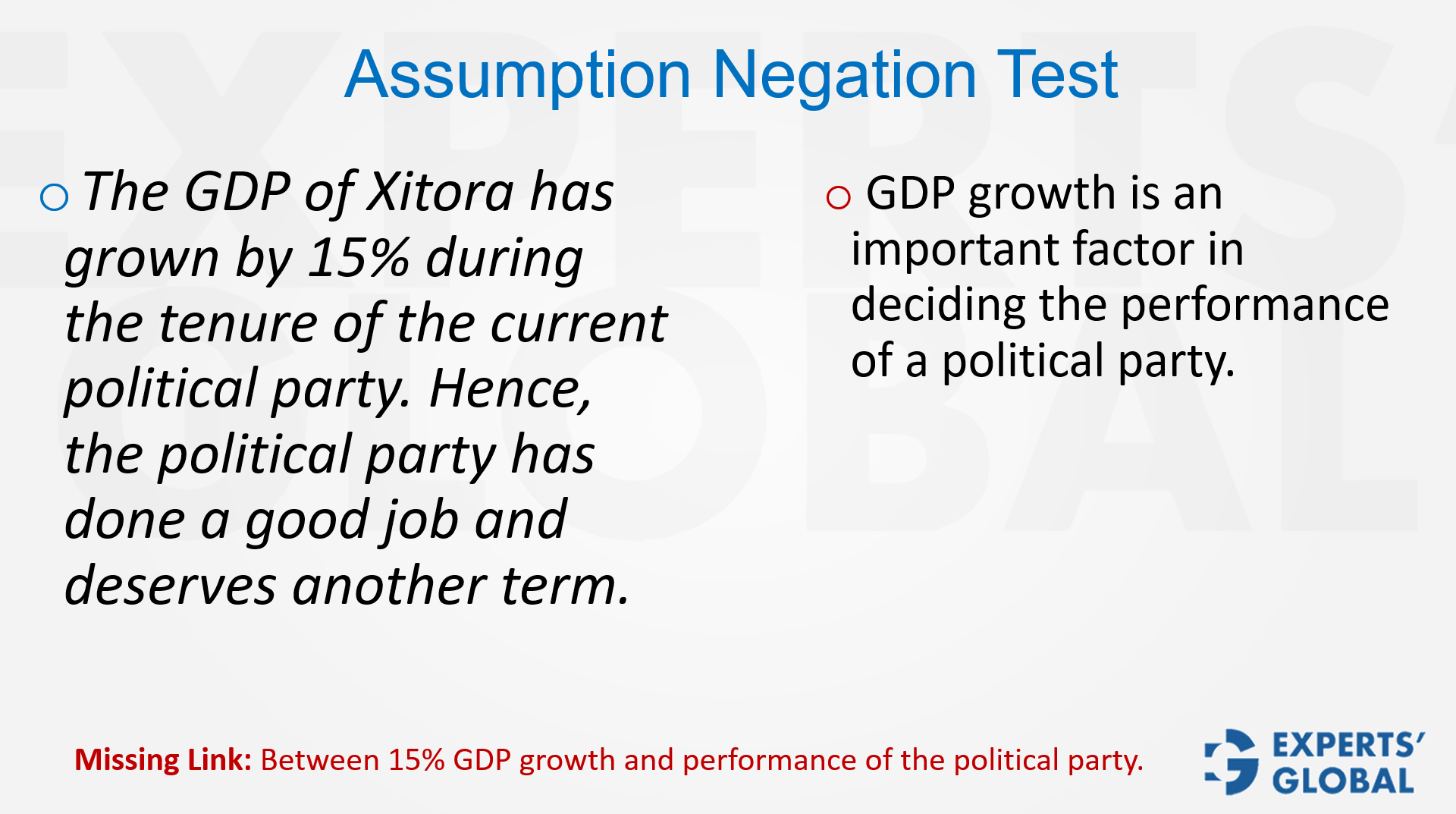Invest 30 seconds...
...for what may lead to a life altering association!
Help Line
- +91.8800.2828.00 (IND)
- 1030-1830 Hrs IST, Mon-Sat
- support@expertsglobal.com
...for what may lead to a life altering association!


Use the Assumption Negation Test on GMAT CR, when stuck. Identify the premise and conclusion, propose the likely assumption, then negate it. If the argument collapses, the assumption is essential. Use this method sparingly, since it takes time and should be reserved for tough cases.
Discover the Assumption Negation Test, a precise tool for recognizing necessary assumptions in Critical Reasoning. Identify a candidate assumption, consider its negation, and observe whether the conclusion can still stand; a collapse signals necessity. The video introduces the idea and clarifies when to apply it as a tiebreaker. This lens strengthens structured analysis during GMAT prep and supports rigorous argument appraisal in MBA admissions. Read on for a methodical treatment that sets up the detailed article that follows the video.

In the study of GMAT Critical Reasoning, the concept of assumptions plays a central role. An assumption is a statement that must be true for an argument to hold. Without it, the entire reasoning collapses. At times, however, it becomes difficult to identify which option in a question truly qualifies as an assumption. In such moments, the Assumption Negation Test becomes a dependable backup method.
Take the argument presented:

The premise is that there is a 15% GDP growth, and the conclusion drawn is that the political party in power has done a good job and should continue in power.
One answer choice suggests that GDP growth is an important factor in deciding the performance of a political party.
To test whether this is a valid assumption, let’s apply the negation test…
Negating the statement gives: “GDP growth is NOT an important factor in deciding the performance of a political party.”
Now place this negated version back into the argument. The moment you do, the conclusion that the party has done a good job collapses entirely.
The argument was based solely on GDP growth, and if GDP growth is not important, then the conclusion is void.
This proves that the original statement, “GDP growth is an important factor,” is indeed a correct assumption.
It is important to remember that this test is a backup strategy. If applied to every single question, it will slow you down and make the process unnecessarily time-consuming. The right approach is to use it only when you are confused between choices and cannot clearly see which one must be true.
The Assumption Negation Test acts like a flashlight in the dark corners of confusion. When uncertainty surrounds your answer choices, this tool cuts through and shows you the assumption without which the argument cannot survive. Used wisely, it will not only strengthen your accuracy but also give you a deeper confidence in your reasoning.
The Assumption Negation Test helps confirm whether a statement is truly an assumption. Negate the suspected link and check if the argument still stands; if it collapses, the statement is essential. Use this test as a selective tool, mainly when choices feel close or confusing. It sharpens logical clarity and distinguishes assumptions from mere strengtheners. Practicing its application in GMAT simulations ensures familiarity under timed conditions, reinforcing both reasoning accuracy and decision-making confidence across Critical Reasoning problems.
The Assumption Negation Test reminds us that truth often reveals itself when we challenge our own beliefs. In GMAT preparation, this habit of testing assumptions nurtures sharper reasoning and resilience under pressure. In MBA application to a competitive school like ISB, it echoes the practice of questioning the hidden premises behind personal choices and professional claims. In life, too, clarity emerges when we examine what our conclusions rest upon and see whether they still stand if the foundation is removed. Each GMAT mock offers a chance to practice this discipline of testing, refining, and strengthening thought.